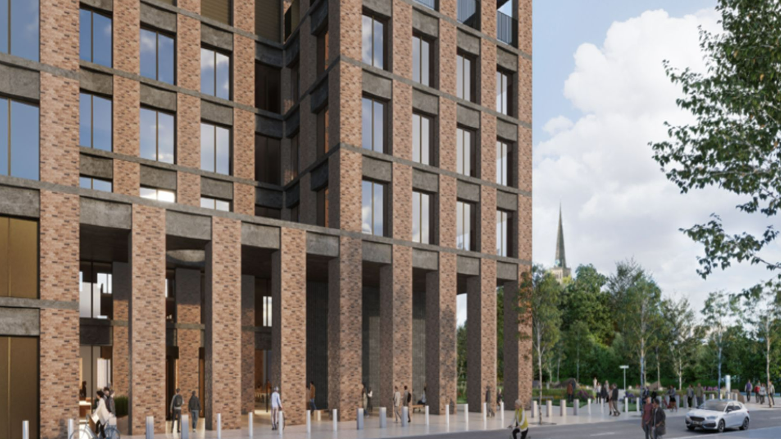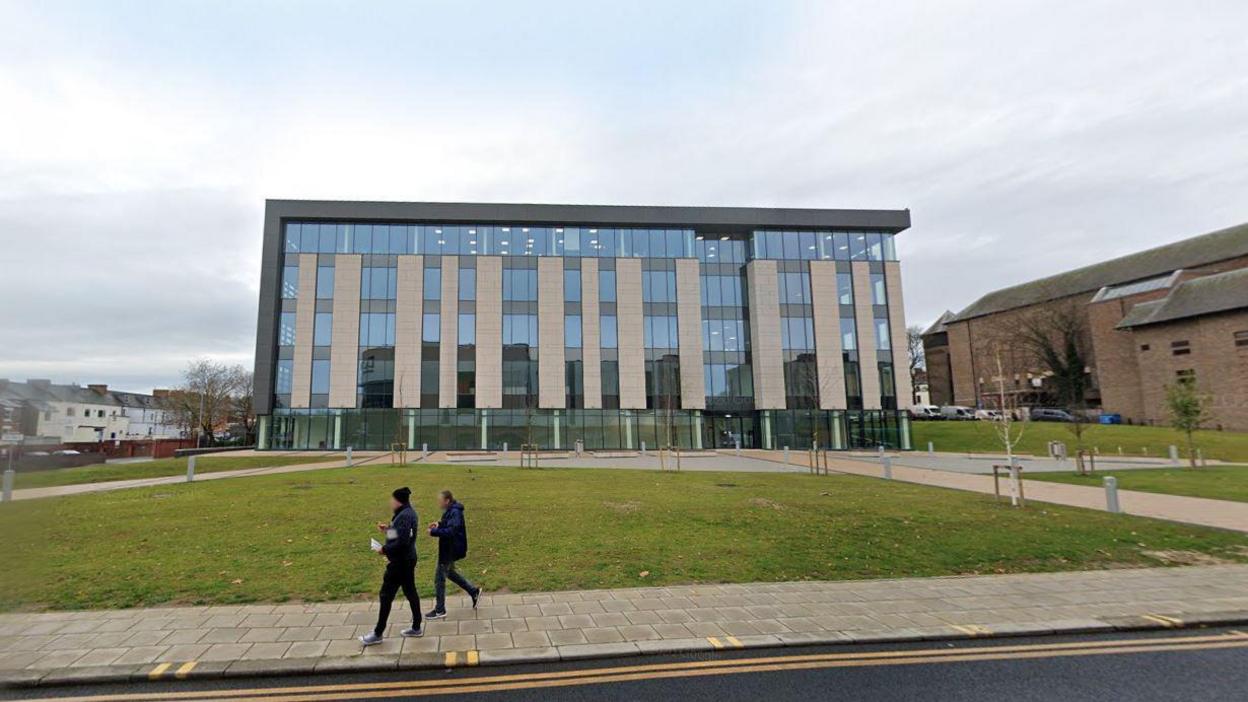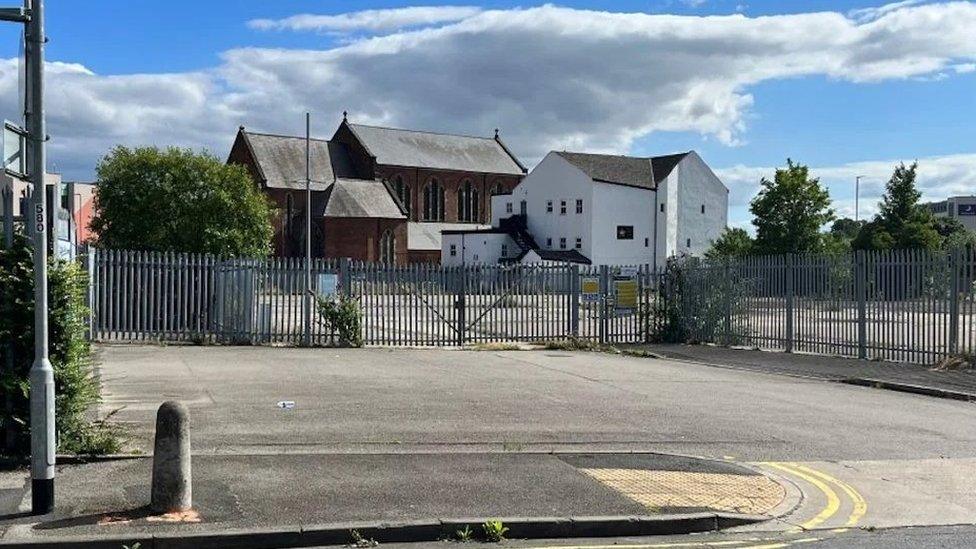Green light given to Treasury hub plans

Councillor Gerald Lee said the building would be "modern and dynamic"
- Published
Plans to build a government hub in a town centre have been approved, despite concerns over parking.
The five-storey Treasury office will be built on Darlington's Brunswick Street as part of plans to relocate some government departments to the area.
It will form part of a campus designed to provide opportunities for people in the North East "to do government jobs that were traditionally only available in London".
In response to concerns, Darlington Borough Council planning officer David Coates said the site, which has just 14 parking spaces, was designed to deter people from using their cars to access it.
The proposals were approved at a meeting of the council's planning committee.
The new hub will stand on the site of a former car park opposite St Cuthbert's Church and will form part of the campus, alongside the town's existing Feethams House and Bishopsgate House.
The campus incorporates government departments, including HM Treasury, the Department for Business and Trade, the Ministry of Housing, Communities and Local Government and the Office for National Statistics.
Second Permanent Secretary to the Treasury Beth Russell said a shift to the North East for some departments made government policy-making more reflective of the communities it served.
Parking problems
Construction of the Brunswick Street building is expected to begin later this year and be completed by early 2027.
Conservative councillor Gerald Lee said the building would "take Darlington into the future".
However, some objectors believe the lack of dedicated car parking spaces could cause problems.
There will be 14 spaces created alongside the building, with visitors expected to travel by public transport or park elsewhere in the town centre.
Councillor Lorraine Tostevin told the meeting it was a mistake not to provide more, according to the Local Democracy Reporting Service.
She added: "It seems ironic it’s being built on a former car park and there’s not much car parking."
Planning officer David Coates said people would make alternative arrangements, such as using buses and sharing lifts.
"It's been designed to minimise vehicle movements to and from the site, bearing in mind it's a sustainable location near bus stops and the railway station," he added.
"It’s designed to deter people from using cars to access it. If there are no parking spaces it reduces the possibility."
Follow BBC Tees on X (formerly Twitter), external, Facebook, external and Instagram, external. Send your story ideas to northeastandcumbria@bbc.co.uk.
More stories from BBC North East and Cumbria
- Published29 April 2024

- Published29 September 2023
